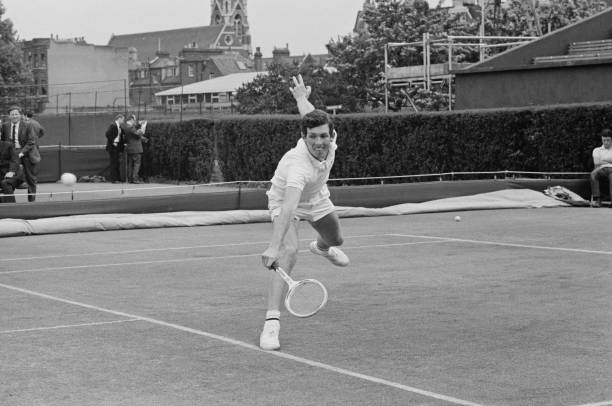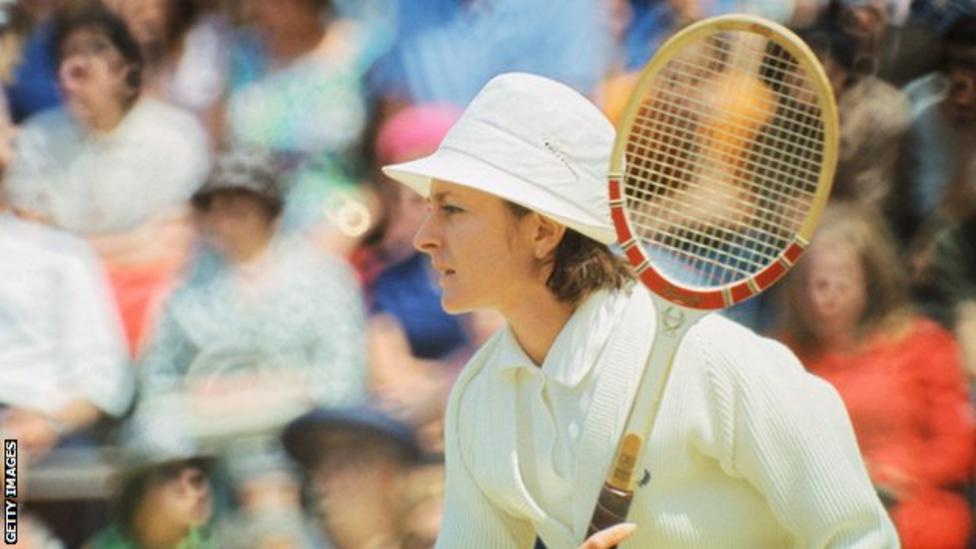The singles final of the Virginia Slims Championships in Boca Raton, pitting home favorite Chris Evert against hard-hitting veteran Nancy Gunter, was scheduled for 3:00 in the afternoon on October 21st. By 12:30, the grandstand was packed.
The excitement wasn’t all thanks to Evert, Florida’s teen sensation. The circuit-ending Slims event had been on shaky ground just a few days before, with Margaret Court falling ill and Billie Jean King a no-show. But on finals day, there were plenty of reasons to turn out for the tennis instead of staying home to watch the Dolphins on TV.
Court had withdrawn from the singles, but after a brief hospital visit for a stomach ailment, she elected to enter the doubles. A suitable partner was available in Rosie Casals, who would have teamed with Billie Jean had she made the trip. It was quite the scratch duo: Margaret was the game’s dominant force in singles, and Casals was–with the possible exception of King–the circuit’s strongest doubles player. Between them, Court and Casals had won 20 doubles titles in 1973 alone.
That’s why the crowd turned out early: The doubles final made for a particularly appetizing opener. The last-minute pair had scuffled in the early going, but they made it through three tight matches. In the final, against the top-seeded team of Françoise Dürr and Betty Stöve, Court and Casals finally synced up and whipped their fellow veterans, 6-2, 6-4.
Court’s share of the winnings came to “only” $2,000. Her full-season tally amounted to $202,000, a new best for a female athlete in any sport.
Evert set a record that day, too. She came into the final seeking to end the “hex” that Gunter held on her, in the form of a 5-0 head-to-head record. (“It never really was a hex,” said Chrissie.) After 85 minutes of slugging from the baseline and a few wind-aided, spirit-sapping drop shots, Evert broke the spell, 6-3, 6-3. She picked up a check for $25,000, pushing her own total to $123,000, the highest-ever sum for a first-year professional.
It was a sign of just how fast the game had grown. Just two years earlier, Billie Jean had become the first woman athlete to earn $100,000 in a season. King almost reached the mark again in 1973 despite her struggles with injury, and she cleared another $100,000 from the Battle of the Sexes. Evert would finish the year with more than $150,000, and both Casals and Evonne Goolagong would break six figures.
The sums on offer were so mind-boggling–at least compared to the prize money of years past–that the leading women could afford to say no. Billie Jean had been ready to boycott both Wimbledon and the US Open for the cause of equal prize money, and she skipped the Slims Championships despite its own record-breaking $110,000 purse.
Now, Madame Superstar wasn’t the only leading lady with the freedom to choose. Evert merely scoffed when Bobby Riggs, in town for the pro-celebrity event before the Slims Championships began, challenged her to a $100,000 match, winner-take-all. “Let Rosie play him,” she said–she had a reputation to protect. For an 18-year-old superstar at the dawn of the Open era, $123,000 was only the beginning.
* * *
This post is part of my series about the 1973 season, Battles, Boycotts, and Breakouts. Keep up with the project by checking the TennisAbstract.com front page, which shows an up-to-date Table of Contents after I post each installment.
You can also subscribe to the blog to receive each new post by email:


